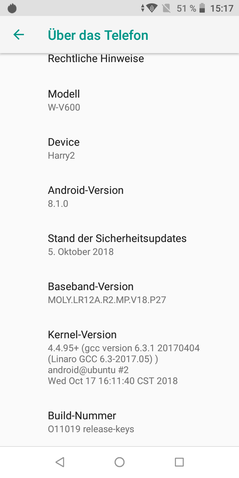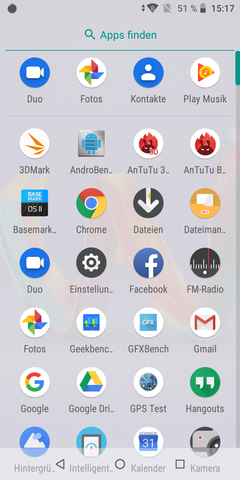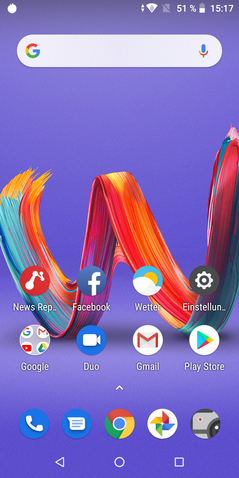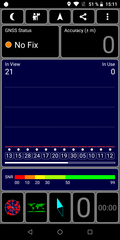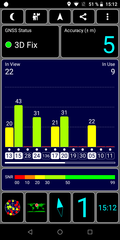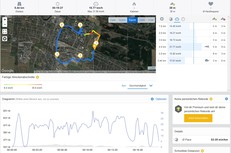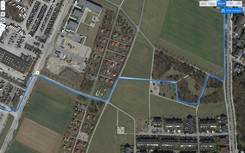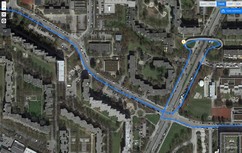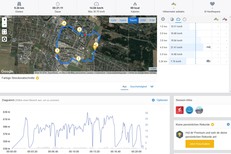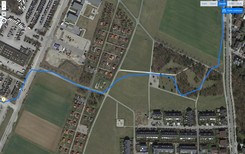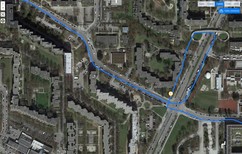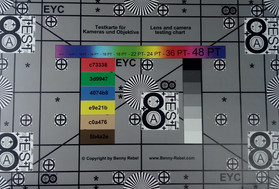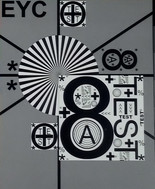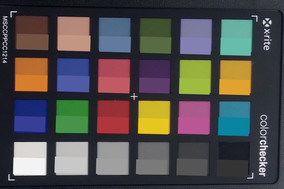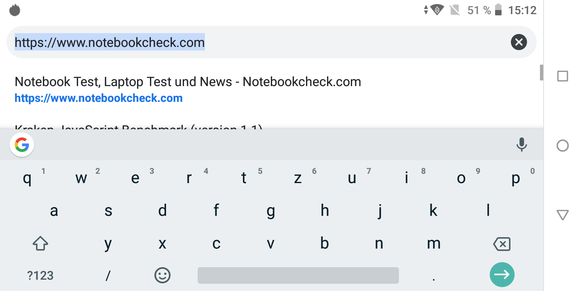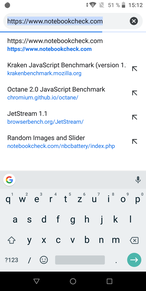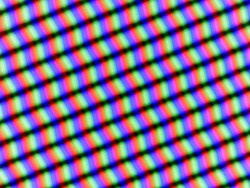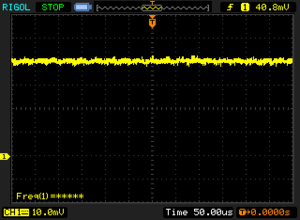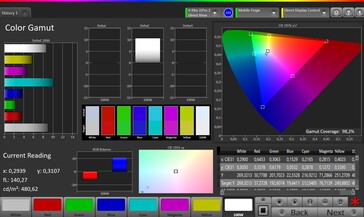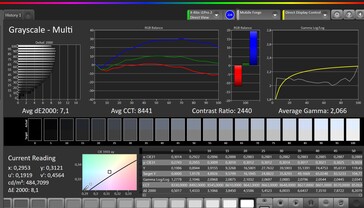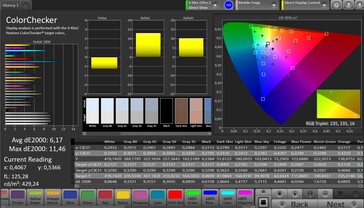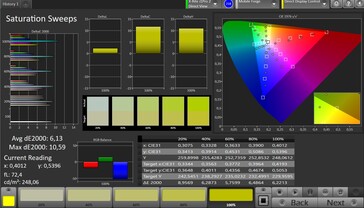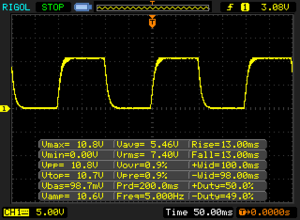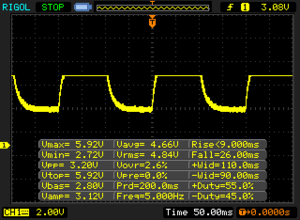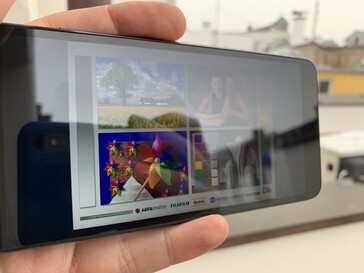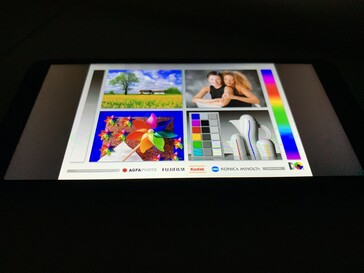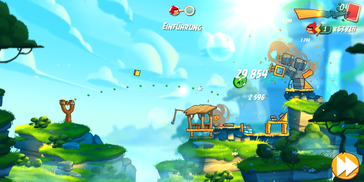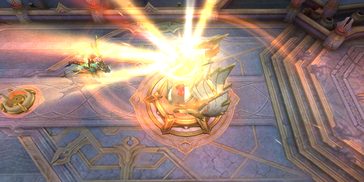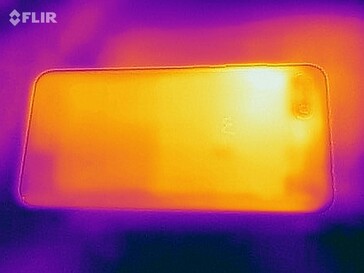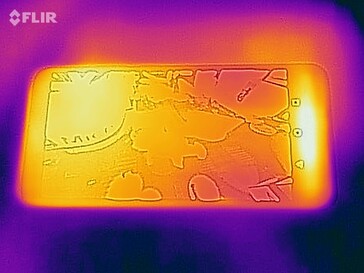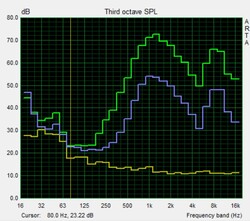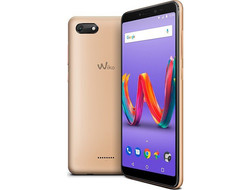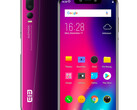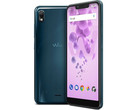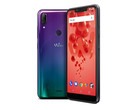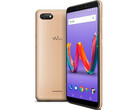Wiko Harry 2 Smartphone Review
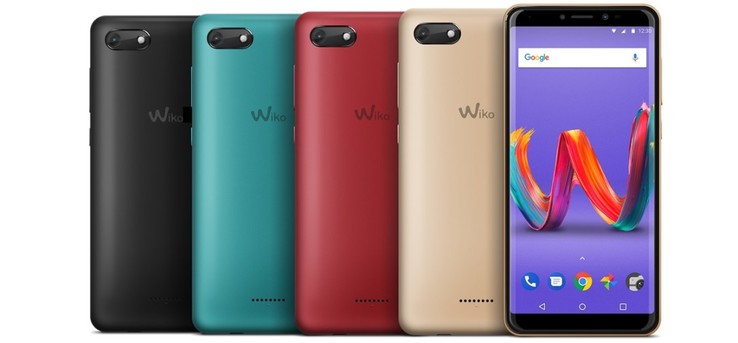
Are you looking for a big screen smartphone yet are limited by a rather tight budget? Then the Wiko Harry 2 might be just the right phone for you. It lacks modern bells and whistles such as the notch, but offers remarkable color choices in return. It also lacks a dual camera and its internal storage is somewhat limited. That said these limitations are not uncommon in the device’s price range, and the question at hand is whether or not the affordable Harry 2 is a worthwhile smartphone option.
Let us find out in our review, where we compare it to the Nokia 2.1, the Xiaomi Redmi 6A, and the Gigaset GS100.
Case
Harry’s plastic back cover is matte and ever so slightly pearly. It is available in four different colors: turquoise, red, dark grey, and golden brown. The rear cover is removable, and behind it we find the user-replaceable battery, two SIM card slots, and the microSD slot.
At 150 g (~5.3 oz) the Wiko Harry 2 is a comparatively light smartphone. Unfortunately, case rigidity leaves a lot to be desired, and pressure applied to its back has an immediate effect on the screen.
Connectivity
At the bottom we find a MicroUSB port with support for USB-OTG, at the top the device features a 3.5-mm audio jack. Internal storage is a meager 16 GB, however we should note that some devices in Harry’s price range have to make do with just 8 GB. For its class, 2 GB of RAM is more than decent.
Software
The device comes with Android 8.1 preloaded, and there is no information regarding a possible upgrade to Android 9. Security patches were as of October 2018 and thus a bit outdated. We would not expect any updates for a device this cheap, though.
The overall Android experience was fairly vanilla, and we did not find too much bloatware preloaded on our device.
Communication and GPS
With a total of just four LTE bands the Wiko Harry 2 offers the bare minimum to be usable in Europe. Traveling abroad is going to pose a challenge though, and you should prepare yourself for complete lack of mobile internet connectivity in most parts of the world. In urban areas, LTE connectivity worked reliably and well.
Wi-Fi support was also fairly limited, and features such as support for the 5 GHz band or fast 802.11ac are missing. When connected to our Linksys EA8500 reference router, the Wiko Harry 2 performed as expected for its class.
| Networking | |
| iperf3 transmit AX12 | |
| Gigaset GS100 | |
| Xiaomi Redmi 6A | |
| Nokia 2.1 | |
| Wiko Harry 2 | |
| iperf3 receive AX12 | |
| Gigaset GS100 | |
| Wiko Harry 2 | |
| Xiaomi Redmi 6A | |
| Nokia 2.1 | |
We were unable to obtain GPS lock indoors. Outdoors, on the other hand, it only took a few seconds to determine our exact position with an accuracy of 5 m (~16 ft).
As with every smartphone we review, we took the Wiko Harry 2 on our short biking trip around the block in order to compare it to a professional Garmin Edge 520 GPS unit. All things considered the Harry 2 was fairly accurate, even though it was obviously not able to hold a candle to the Garmin satnav. The Harry 2 is thus well suited for occasional satellite navigation.
We should add though that we experienced major issues with providing the Runtastic app that we use for track recording with positioning data when the screen turned off and the device went into standby mode.
Telephony and Call Quality
Finally a dark mode for Google’s default telephony app! Wiko does not change it at all, which is a smart decision given that Google’s default app is very intuitive and easy to use.
Call quality using the earphone and internal microphone was decent, although loud voices showed a slight tendency for blaring. The microphone, on the other hand, did a fantastic job and recorded both quiet and loud noises very accurately and well. When talking on speakerphone our conversational partner sounded rather tinny and thin while our own voice was immaculate and very clear.
Cameras
The Harry 2 features single-lens cameras on both sides. The 5 MP sensor at the front fails to capture crisp and sharp photos, and we did not even need to zoom in to notice a very obvious blur. In addition, colors were noticeably distorted: the white wall is visibly read underneath the drawing and noticeably yellow above it. Thanks to an LED flash, you can take photos in dim and dark environments as well, however we would advise against using the digital zoom on this shooter.
The rear-facing main camera features a 13 MP sensor, and captures fairly cool photos even when the motif is floral in nature and tinted visibly red. Bright areas tend to be overexposed, and the photos were rather grainy in general. In poor lighting conditions and without using the flash, exposure and focus were inadequate while the bright candle in the middle was overexposed at the same time.
Videos are captured in 1080p at 30 frames per second. Movements were captured smoothly, however the camera was rather slow and gradual in adapting to changes in brightness.
We take every smartphone camera into our lab in order to test it under normalized conditions. Wiko’s Harry 2 performed rather poorly, and the photos were too dark, too blurry, and visibly out of focus.
Accessories and Warranty
By default, Wiko smartphones come with a 24-month warranty. Please see our Guarantees, Return policies and Warranties article for country-specific information. In addition to the power supply and the USB cable we also found a headset in the box. Even though it was not the best and certainly will not satisfy audiophiles, its addition is remarkable nevertheless considering the device’s price point.
The accessories listed on Wiko’s website can be ordered from various online retailers. For example, around $20 will get you the Wiko Smart Folio, a protective cover that leaves the bottom half of the display visible in order to display important information on the underlying part of the screen.
Input Devices and Handling
The touchscreen was responsive up to its very edges. Operating system user interface animations lagged slightly due to the overall poor system performance. Nevertheless, the device remained quite usable at all times.
It lacks a fingerprint reader, and all physical buttons (volume rocker and power button) are located at the right-hand side. They feature a well-pronounced accentuation point and are very easy and pleasant to use.
Display
The 2:1 5.45-inch display runs at a native resolution of 1440x720. Its brightness is definitely above average, and akin to the View 2 Go and the View 2 Plus. It also displayed the same oddity as those two: when held in portrait mode, the top half of the screen was visibly brighter than the lower half.
| |||||||||||||||||||||||||
Brightness Distribution: 87 %
Center on Battery: 479 cd/m²
Contrast: 2395:1 (Black: 0.2 cd/m²)
ΔE ColorChecker Calman: 6.17 | ∀{0.5-29.43 Ø4.77}
ΔE Greyscale Calman: 7.1 | ∀{0.09-98 Ø5}
98.2% sRGB (Argyll 1.6.3 3D)
Gamma: 2.066
CCT: 8441 K
| Wiko Harry 2 1440x720, 5.5" | Nokia 2.1 IPS, 1280x720, 5.5" | Xiaomi Redmi 6A IPS, 1440x720, 5.5" | Gigaset GS100 IPS, 1440x720, 5.5" | |
|---|---|---|---|---|
| Screen | -14% | -1% | -32% | |
| Brightness middle (cd/m²) | 479 | 338 -29% | 404 -16% | 442 -8% |
| Brightness (cd/m²) | 491 | 327 -33% | 400 -19% | 446 -9% |
| Brightness Distribution (%) | 87 | 82 -6% | 82 -6% | 86 -1% |
| Black Level * (cd/m²) | 0.2 | 0.27 -35% | 0.26 -30% | 0.35 -75% |
| Contrast (:1) | 2395 | 1252 -48% | 1554 -35% | 1263 -47% |
| Colorchecker dE 2000 * | 6.17 | 5.36 13% | 4.28 31% | 8.03 -30% |
| Colorchecker dE 2000 max. * | 11.46 | 9.77 15% | 9.97 13% | 15.81 -38% |
| Greyscale dE 2000 * | 7.1 | 6.2 13% | 3.5 51% | 10.4 -46% |
| Gamma | 2.066 106% | 2.345 94% | 2.213 99% | 2.02 109% |
| CCT | 8441 77% | 8460 77% | 6899 94% | 10070 65% |
| Color Space (Percent of sRGB) (%) | 98.2 |
* ... smaller is better
Screen Flickering / PWM (Pulse-Width Modulation)
| Screen flickering / PWM not detected | |||
In comparison: 53 % of all tested devices do not use PWM to dim the display. If PWM was detected, an average of 8084 (minimum: 5 - maximum: 343500) Hz was measured. | |||
We were particularly impressed by the display’s low black level, which resulted in deep blacks even with the brightness cranked all the way up and an impressive contrast ratio of 2,395:1.
When inspected in depth, the CalMAN software showed a very pronounced blue tint, and consequently also a very high color temperature. Deviation from the reference spectrum was fairly severe, which is not not particularly uncommon for devices in this class.
Display Response Times
| ↔ Response Time Black to White | ||
|---|---|---|
| 26 ms ... rise ↗ and fall ↘ combined | ↗ 13 ms rise | |
| ↘ 13 ms fall | ||
| The screen shows relatively slow response rates in our tests and may be too slow for gamers. In comparison, all tested devices range from 0.1 (minimum) to 240 (maximum) ms. » 61 % of all devices are better. This means that the measured response time is worse than the average of all tested devices (20.2 ms). | ||
| ↔ Response Time 50% Grey to 80% Grey | ||
| 37 ms ... rise ↗ and fall ↘ combined | ↗ 9 ms rise | |
| ↘ 26 ms fall | ||
| The screen shows slow response rates in our tests and will be unsatisfactory for gamers. In comparison, all tested devices range from 0.165 (minimum) to 636 (maximum) ms. » 52 % of all devices are better. This means that the measured response time is worse than the average of all tested devices (31.6 ms). | ||
Performance
Mediatek’s MT6739 is an entry-level SoC, and while it may not be the fastest kid on the block, it should be fast enough for most everyday apps. The Gigaset GS100 was equipped with the same SoC, however it performed much worse than the Wiko Harry 2. The latter ran noticeably smoother and faster, and even user interface frame drops were less frequent than with the GS100. This may well be the effect of our review unit’s additional RAM.
The GPU is somewhat future-proof and performed as expected.
| PCMark for Android | |
| Work performance score (sort by value) | |
| Wiko Harry 2 | |
| Nokia 2.1 | |
| Xiaomi Redmi 6A | |
| Average Mediatek MT6739 (3742 - 5136, n=11) | |
| Work 2.0 performance score (sort by value) | |
| Wiko Harry 2 | |
| Nokia 2.1 | |
| Xiaomi Redmi 6A | |
| Gigaset GS100 | |
| Average Mediatek MT6739 (2467 - 5377, n=16) | |
| GFXBench (DX / GLBenchmark) 2.7 | |
| T-Rex Onscreen (sort by value) | |
| Wiko Harry 2 | |
| Nokia 2.1 | |
| Xiaomi Redmi 6A | |
| Gigaset GS100 | |
| Average Mediatek MT6739 (8.2 - 15, n=17) | |
| Average of class Smartphone (12 - 166, n=153, last 2 years) | |
| 1920x1080 T-Rex Offscreen (sort by value) | |
| Wiko Harry 2 | |
| Nokia 2.1 | |
| Xiaomi Redmi 6A | |
| Gigaset GS100 | |
| Average Mediatek MT6739 (4.9 - 6.1, n=17) | |
| Average of class Smartphone (22 - 954, n=153, last 2 years) | |
| GFXBench 3.0 | |
| on screen Manhattan Onscreen OGL (sort by value) | |
| Wiko Harry 2 | |
| Nokia 2.1 | |
| Xiaomi Redmi 6A | |
| Gigaset GS100 | |
| Average Mediatek MT6739 (4.4 - 10, n=16) | |
| Average of class Smartphone (18 - 166, n=155, last 2 years) | |
| 1920x1080 1080p Manhattan Offscreen (sort by value) | |
| Wiko Harry 2 | |
| Nokia 2.1 | |
| Xiaomi Redmi 6A | |
| Average Mediatek MT6739 (2.2 - 2.8, n=14) | |
| Average of class Smartphone (12 - 606, n=154, last 2 years) | |
| GFXBench 3.1 | |
| on screen Manhattan ES 3.1 Onscreen (sort by value) | |
| Wiko Harry 2 | |
| Nokia 2.1 | |
| Xiaomi Redmi 6A | |
| Gigaset GS100 | |
| Average Mediatek MT6739 (2.6 - 6.7, n=16) | |
| Average of class Smartphone (11 - 166, n=155, last 2 years) | |
| 1920x1080 Manhattan ES 3.1 Offscreen (sort by value) | |
| Wiko Harry 2 | |
| Nokia 2.1 | |
| Xiaomi Redmi 6A | |
| Gigaset GS100 | |
| Average Mediatek MT6739 (1.3 - 1.7, n=16) | |
| Average of class Smartphone (8.4 - 413, n=154, last 2 years) | |
| AnTuTu v7 - Total Score (sort by value) | |
| Wiko Harry 2 | |
| Xiaomi Redmi 6A | |
| Average Mediatek MT6739 (26874 - 46951, n=13) | |
| AnTuTu v6 - Total Score (sort by value) | |
| Wiko Harry 2 | |
| Nokia 2.1 | |
| Xiaomi Redmi 6A | |
| Gigaset GS100 | |
| Average Mediatek MT6739 (25012 - 38060, n=13) | |
When browsing the web, loading images was noticeably slower than expected and websites took longer to render than we would have preferred. Even for its class the Wiko Harry 2 performed rather poorly in our web browsing benchmarks.
| JetStream 1.1 - Total Score | |
| Xiaomi Redmi 6A (Chrome 70) | |
| Average Mediatek MT6739 (13.4 - 18.5, n=14) | |
| Nokia 2.1 (Chrome 70) | |
| Wiko Harry 2 (Chrome 71) | |
| Gigaset GS100 (Chrome 68) | |
| Octane V2 - Total Score | |
| Average of class Smartphone (2228 - 126661, n=194, last 2 years) | |
| Xiaomi Redmi 6A (Chrome 70) | |
| Average Mediatek MT6739 (2093 - 3386, n=15) | |
| Wiko Harry 2 (Chrome 71) | |
| Nokia 2.1 (Chrome 70) | |
| Gigaset GS100 (Chrome 68) | |
| Mozilla Kraken 1.1 - Total | |
| Wiko Harry 2 (Chrome 71) | |
| Average Mediatek MT6739 (13599 - 18154, n=16) | |
| Gigaset GS100 (Chrome 68) | |
| Nokia 2.1 (Chrome 70) | |
| Xiaomi Redmi 6A (Chrome 70) | |
| Average of class Smartphone (257 - 28190, n=154, last 2 years) | |
* ... smaller is better
Internal storage performance was average, and the Harry 2 was outperformed by the Xiaomi and the Nokia. The Gigaset GS100, on the other hand, was slower than the Harry 2.
When removing the rear cover, a “no hot plug” imprint signifies that in order to install or remove a microSD card, the phone must be powered off or at least restarted. Once we followed these instructions our Toshiba Exceria Pro M501 reference card worked without reproach.
| Wiko Harry 2 | Nokia 2.1 | Xiaomi Redmi 6A | Gigaset GS100 | Average 16 GB eMMC Flash | Average of class Smartphone | |
|---|---|---|---|---|---|---|
| AndroBench 3-5 | 12% | 83% | -36% | -31% | 1886% | |
| Sequential Read 256KB (MB/s) | 227.3 | 288.3 27% | 277.5 22% | 97.2 -57% | 164.5 ? -28% | 2235 ? 883% |
| Sequential Write 256KB (MB/s) | 59.1 | 51.2 -13% | 131.7 123% | 24 -59% | 43 ? -27% | 1871 ? 3066% |
| Random Read 4KB (MB/s) | 35.47 | 50.5 42% | 33.94 -4% | 17.6 -50% | 21.7 ? -39% | 297 ? 737% |
| Random Write 4KB (MB/s) | 11.6 | 13.45 16% | 52.2 350% | 6.2 -47% | 8.08 ? -30% | 343 ? 2857% |
| Sequential Read 256KB SDCard (MB/s) | 80.3 ? | 79.4 ? -1% | 82.8 ? 3% | 79.5 ? -1% | 59.1 ? -26% | |
| Sequential Write 256KB SDCard (MB/s) | 63.4 ? | 61.9 ? -2% | 65.7 ? 4% | 61 ? -4% | 39.8 ? -37% |
Gaming
While gaming is possible on the Wiko Harry 2 you will be limited to less demanding games. Some games, such as "Asphalt 9", will not even run at all as developers sometimes hard-code certain hardware restrictions into their games. Other games, such as "Arena of Valor", were playable and even ran smoothly, although they tended to lag noticeably when navigating the menus. Simple games such as "Angry Birds 2" were no problem at all.
Touchscreen and orientation sensor worked reliably and fast.
Emissions
Temperature
At no more than 32.4 °C (~90 °F), the Harry 2 remained comparatively cool. When idle, we failed to notice any rise in temperature whatsoever.
(+) The maximum temperature on the upper side is 32.4 °C / 90 F, compared to the average of 35.2 °C / 95 F, ranging from 21.9 to 247 °C for the class Smartphone.
(+) The bottom heats up to a maximum of 31.5 °C / 89 F, compared to the average of 34 °C / 93 F
(+) In idle usage, the average temperature for the upper side is 26.7 °C / 80 F, compared to the device average of 32.9 °C / 91 F.
Speakers
The small rear-firing speaker was pretty quiet. While high-frequency mid-tones were underrepresented, as can be seen on the pink noise graph on the right, the overall characteristic was still rather tinny. On maximum volume, highs were borderline uncomfortable.
Both Bluetooth and the analog audio port worked flawlessly. The included headset is not going to satisfy audiophiles, but it is certainly better than nothing.
Wiko Harry 2 audio analysis
(±) | speaker loudness is average but good (78.5 dB)
Bass 100 - 315 Hz
(-) | nearly no bass - on average 57.8% lower than median
(+) | bass is linear (0% delta to prev. frequency)
Mids 400 - 2000 Hz
(-) | nearly no mids - on average 57.8% lower than median
(+) | mids are linear (0% delta to prev. frequency)
Highs 2 - 16 kHz
(-) | nearly no highs - on average 57.8% lower than median
(+) | highs are linear (0% delta to prev. frequency)
Overall 100 - 16.000 Hz
(-) | overall sound is not linear (120% difference to median)
Compared to same class
» 89% of all tested devices in this class were better, 9% similar, 3% worse
» The best had a delta of 11%, average was 35%, worst was 134%
Compared to all devices tested
» 97% of all tested devices were better, 3% similar, 1% worse
» The best had a delta of 4%, average was 24%, worst was 134%
Xiaomi Redmi 6A audio analysis
(±) | speaker loudness is average but good (77.8 dB)
Bass 100 - 315 Hz
(-) | nearly no bass - on average 30.6% lower than median
(±) | linearity of bass is average (8.3% delta to prev. frequency)
Mids 400 - 2000 Hz
(+) | balanced mids - only 4.7% away from median
(+) | mids are linear (6% delta to prev. frequency)
Highs 2 - 16 kHz
(+) | balanced highs - only 3.7% away from median
(+) | highs are linear (2% delta to prev. frequency)
Overall 100 - 16.000 Hz
(±) | linearity of overall sound is average (27.3% difference to median)
Compared to same class
» 70% of all tested devices in this class were better, 5% similar, 24% worse
» The best had a delta of 11%, average was 35%, worst was 134%
Compared to all devices tested
» 83% of all tested devices were better, 4% similar, 13% worse
» The best had a delta of 4%, average was 24%, worst was 134%
Battery Life
Power Consumption
The Harry 2’s power consumption was typical for this particular SoC. In other words: comparatively high power consumption even in low-load scenarios.
| Off / Standby | |
| Idle | |
| Load |
|
Key:
min: | |
| Wiko Harry 2 2900 mAh | Nokia 2.1 4000 mAh | Xiaomi Redmi 6A 3000 mAh | Gigaset GS100 3000 mAh | Average Mediatek MT6739 | Average of class Smartphone | |
|---|---|---|---|---|---|---|
| Power Consumption | 29% | 30% | -5% | -14% | -17% | |
| Idle Minimum * (Watt) | 1.2 | 0.7 42% | 0.7 42% | 1.3 -8% | 1.522 ? -27% | 0.847 ? 29% |
| Idle Average * (Watt) | 2 | 1.2 40% | 1.2 40% | 2.1 -5% | 2.17 ? -9% | 1.448 ? 28% |
| Idle Maximum * (Watt) | 2.7 | 1.9 30% | 2 26% | 2.9 -7% | 2.86 ? -6% | 1.633 ? 40% |
| Load Average * (Watt) | 4.2 | 3.2 24% | 3.4 19% | 4.4 -5% | 4.73 ? -13% | 6.96 ? -66% |
| Load Maximum * (Watt) | 5.2 | 4.8 8% | 4 23% | 5.3 -2% | 5.99 ? -15% | 11.3 ? -117% |
* ... smaller is better
Battery Life
Our review unit featured the smallest battery in our test group. And while its battery life was acceptable (10:13 hours in our test) it was easily outperformed by the Nokia 2.1 and the Xiaomi Redmi 6A. Keep in mind though that unlike most of its competitors the Harry 2 features a user-replaceable battery.
The included 5-W power supply took more than 2 hours to charge the device from near empty to full.
| Wiko Harry 2 2900 mAh | Nokia 2.1 4000 mAh | Xiaomi Redmi 6A 3000 mAh | Gigaset GS100 3000 mAh | |
|---|---|---|---|---|
| Battery runtime | ||||
| WiFi v1.3 (h) | 10.2 | 13.5 32% | 12.7 25% | 8.9 -13% |
Pros
Cons
Verdict
Even in its second generation, the Wiko Harry 2 remains an affordable smartphone with a big screen capable of meeting basic demands. There are several noteworthy features, such as the bright high-contrast display, the reliable touchscreen, and its overall adequate performance. It also remained very cool to the touch, and its battery life may not have raised the bar, but was decent enough, especially considering that the battery is removable and battery life can thus easily be multiplied.
However, a $100 smartphone is always going to come with limitations. In case of the Harry 2, these include the structurally weak and overall rather simple case, the limited number of supported LTE bands, the device’s slow web browsing performance, and last but not least the poor camera that was barely decent enough for occasional snapshots.
Wiko’s Harry 2 is a decent smartphone for those looking for a cheap yet decently equipped smartphone.
We found no major flaws during our test, and can thus endorse the Wiko Harry 2 without hesitation in case you are looking for a cheap yet decently equipped smartphone. That said, we also suggest taking a closer look at its closest competitors, such as for example the Xiaomi Redmi 6A. It may be a bit more expensive, but it also has a lot to offer.
Wiko Harry 2
- 01/23/2019 v6 (old)
Florian Schmitt




